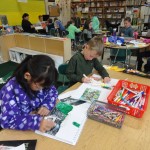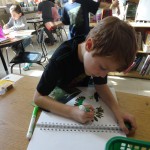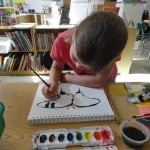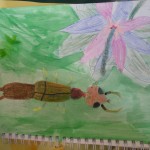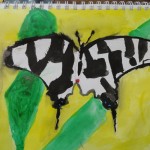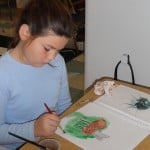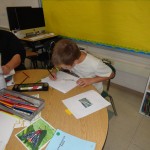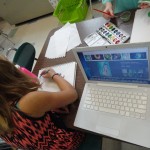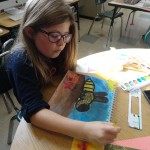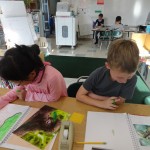This week we’ve spent time exploring how writing grows. We’ve identified qualities of good writing, whether narrative, informational, or persuasive, and are looking at our own writing to identify and understand what we do well now. From this we are going to set goals for ourselves. It is interesting to see how the children think about writing as both creative and informative. It is fun and challenging.
How We Are Smart
The children used the information from their multiple intelligences surveys to create both a bar graph and a pie chart of how they are smart. We read The Junkyard Wonders by Patricia Polacco to add to our discussion. It gave us a clear example of how understanding and intelligence grows. We are not fixed if we choose not to be. By thinking about what we do and becoming more aware of our choices and attitude toward ourselves we can do most anything we decide to. We are trying to reduce comments like, “I’m not very good at this” or “I can’t do this.” We are trying to add the word “yet” to those statements and come up with a plan to change that.
Artist-Writers’ Workshop is a time for that reflection. Twice a week we work at creating a picture while thinking about our choices and our reaction to the work. They write out this process too. It is a time where if at first we don’t succeed, we can try again. We can make a picture over, using what we like from the first attempt and trying to change what we don’t in the next. Sometimes it works out great, other times not so much. It’s the thought and challenge that are the main goals.
Multiplication Arrays
We spent time this week making sure the class understands what an array is and how this way of understanding multiplication can help us understand area. An array is always a rectangle read as height by base for the multiplication sentences. We worked to see how arrays show themselves on a 10×10 multiplication table. At first we looked at the empty chart. We knew there were 100 empty squares and when hearing that we were responsible for knowing that many facts for both multiplication and division it seemed a lot! But then we began filling the chart in. We filled in the ones. We realized we knew 19 facts there. We filled in the fives and added 17 more facts. Next we filled in the tens and that was 15 more facts. In this way we’ve discovered that we already know half of the chart and we haven’t added the twos and some of the early threes and fours. It is a good feeling to know that breaking this large goal into small steps can make it manageable – it can even feel like a fun challenge to work on a bit at a time.
Bits and Pieces –
- We completed our third chapter read aloud, The Trumpet of the Swan. The children each created a feather showing a favorite scene from the story. We’ll put these together on Louise’s wings so he can “fly” across our classroom.
- We are reading Quinny and Hooper now. We’ve just met the main characters and are trying to decide how they are going to fit together and how the plot will unfold.
- We are continuing to practice the clock climber cursive letter set.
- We are planning to create a classroom museum as a way to share our insect research information. We are brainstorming ways to create eye-catching and informative displays. Be on the look out for an invitation sharing the date and time.
- How is homework going for your family? Some of the children are coming in saying they didn’t have time. I hope that their work takes them no more than 30 to 40 minutes each day. Please let me know if this is not the case for your child.

